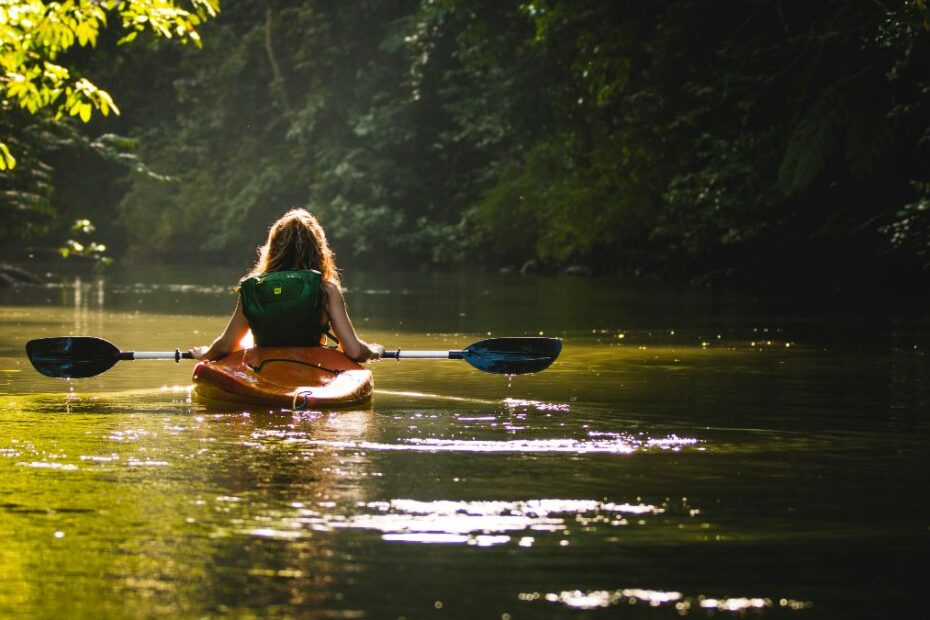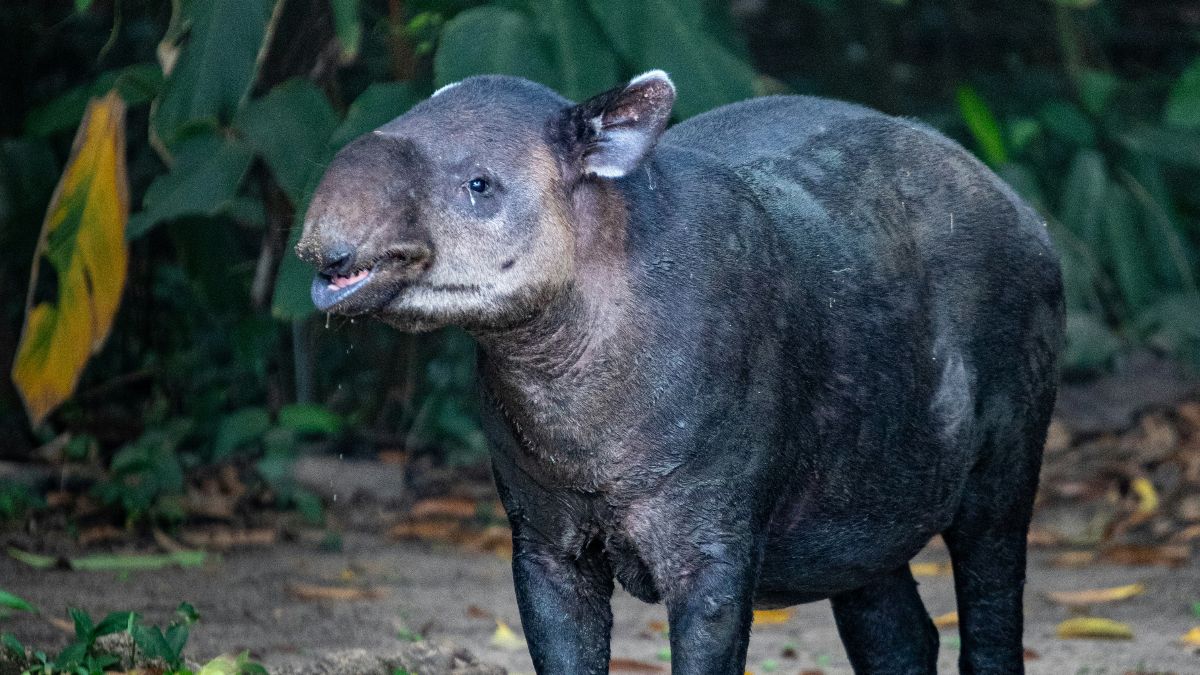Kayaking is one of the most rewarding ways to experience Central America up close. The region’s mix of lakes, rivers, mangroves, and coastlines offers endless opportunities for adventure and wildlife encounters. This guide explores the best kayaking in Central America, highlighting top destinations in every country and what to expect on the water.
The seven small, tropical countries of Central America are made for paddling. You have calm crater lakes, jungle canals, and whitewater rivers, often within a short drive of each other. And that’s not even counting two long Pacific and Caribbean coastlines just perfect for proper ocean or reef kayaking. It doesn’t matter if you’re new to kayaking or an old hand with plenty of experience, the region’s compact geography means you can find your perfect mix of scenery and challenge pretty much anywhere you go.
Choosing the Right Gear for Kayaking in Central America
Kayaking in Central America means dealing with a wide range of environments, including freshwater lakes, whitewater rivers, mangroves, and oceans complete with pounding surf. Having the right gear makes a major difference in safety and comfort.
For most travelers, a sit-on-top or touring kayak is the most practical choice. These models work well on both calm lakes and in the ocean because they are easy to enter and drain quickly. Inflatable kayaks are popular for travelers who move around frequently since they pack down small and perform well in calm water and mangroves.
A corrosion-resistant paddle and a properly fitted PFD (personal flotation device) are essential for all types of kayaking. If you plan longer outings or remote routes, carry a whistle, waterproof light, and first aid kit. Sun protection is also important throughout Central America, so use a UV shirt, hat, polarized sunglasses, and reef-safe sunscreen. In rocky or shallow areas, closed-toe water shoes protect your feet and give better traction. Dry bags or watertight cases keep valuables safe, and a throw rope or tow line adds security when paddling in groups.
Most travelers rent kayaks or join guided tours where all equipment is provided. This is the easiest and safest way to get on the water without dealing with transport or maintenance. That said, there’s nothing to stop more experienced paddlers from bringing their own gear if kayaking is a major part of the trip. Paddlers in the market for a kayak can check out review sites to compare options. Best inflatable kayak guides, for example, provide excellent insight on what to bring down with you.
Where to Go Kayaking in Central America
Each country in Central America offers excellent locations for kayaking and the guide below highlights some of the best places to check out. Wherever you are though, before heading out, always check wind, current, and weather conditions. Morning is usually the calmest time for both freshwater and coastal kayaking. Local guides and outfitters are familiar with seasonal changes and can advise on the safest times to paddle.
Belize
Belize offers excellent cave, river, and reef kayaking. Cave kayaking in Nohoch Cheʼen Archaeological Reserve is perhaps the signature trip, with quiet, black-water passages under limestone ceilings and plenty of stalactite and stalagmite formations. Barton Creek Cave is a gentler version with the same sense of adventure.
For moving water without caves, the Mopan and Macal rivers near San Ignacio are easygoing, scenic floats. Expect clear jungle views, iguanas sunning on branches, and birdlife. On the coast, kayaking along the Belize Barrier Reef and out on the atolls is fantastic. Multi-day lodge- or camp-based trips to Glover’s Reef Atoll are popular for pairing paddling with snorkeling. Many operators also run sunset or bioluminescence night paddles when conditions line up.
View this post on Instagram
Costa Rica
Costa Rica has the region’s strongest mix of whitewater, mangrove, and sea. The Rio Pacuare is the headline whitewater river with continuous Class III–IV rapids in a rainforest canyon that suits guided day runs or overnight trips to riverside lodges. The Rio Sarapiquí ranges from friendly training sections to punchier rapids depending on release and rainfall, which makes it a good step-up river with professional safety cover.
If you prefer wildlife over whitewater, Tortuguero’s canals are classic low-impact paddling with regular sightings of monkeys, caimans, and sloths. Near Manuel Antonio, Damas Island’s mangrove tunnels are calm, narrow passages that offer close looks at this unique ecosystem. Ocean paddlers head to the Golfo Dulce for sheltered seas and dolphin encounters, and to the Nicoya Peninsula for beach-to-beach coastline hops. Lake Arenal is the easy entry point for beginners with big volcano views and predictable wind windows in the morning.
View this post on Instagram
El Salvador
El Salvador’s best kayaking sits on its crater lakes and inside its mangrove bays. Lake Coatepeque delivers clear water and strong scenery in a compact basin ringed by hills. Lake Ilopango is larger with more launch points and services, which helps for casual outings. In the east, the Laguna de Olomega is a broad freshwater refuge with small islands and abundant birdlife.
Along the coast, Bahía de Jiquilisco is the main draw. You paddle inside a protected mangrove maze with regular wildlife sightings and calm water most of the year. The Gulf of Fonseca offers long coastal stretches and island scenery. Advanced paddlers look to the Lempa River for staged multi-day expeditions through estuary and mangrove country, but this is a guided proposition with serious logistics. For simpler coastal time, Barra de Santiago and Playa Los Cóbanos offer short ocean paddles and access to nearby mangroves when tides cooperate.
View this post on Instagram
Guatemala
Lake Atitlán is the country’s marquee destination and one of the region’s most photogenic paddles. Mornings are calm, the shoreline is dotted with Maya villages, and the volcano backdrop does the rest. Most people join a short guided outing out of Panajachel, Santa Cruz La Laguna, or San Pedro La Laguna, but self-guided rentals are common when winds are light. It’s a relaxed, shoreline-hugging environment rather than a crossing lake for most visitors.
On the Caribbean side, Río Dulce adds a different look with high canyon walls, hot springs, and mangrove channels on the way to Livingston. It is better with a guide due to boat traffic, navigation, and the distances involved. The payoff is a quiet, jungle-fringed route with a very different feel to Atitlán’s open water.
View this post on Instagram
Honduras
Kayaking in Honduras offers both reef and river experiences. In the Bay Islands, Roatán’s protected inlets and mangroves make easy half-day paddles with regular breaks for snorkeling. Clear-bottom kayaks are common and suit beginners who want to see the seagrass and coral life below. Utila is flatter and smaller, with a network of mangrove canals that are ideal when winds pick up on the reef side.
On the mainland, the Cangrejal River near La Ceiba is a whitewater hub with lodges clustered along the boulder-garden banks. It’s primarily a rafting river for most travelers, but kayakers with experience can arrange guided sessions when levels are right. For calm-water wildlife, Punta Izopo National Park near Tela offers short, guided mangrove tours with regular birdlife and very little current.
View this post on Instagram
Nicaragua
Nicaragua gives you big-lake variety plus wildlife reserves. Ometepe Island blends lake paddling with volcano views and sheltered river mouths where you can spot birds and caiman. The Isletas of Granada are a reliable half-day, weaving among tiny, vegetated islands at the foot of Mombacho Volcano. Farther afield, the Pearl Cays are a genuine Caribbean escape for experienced paddlers traveling with a boat support plan.
The Río San Juan corridor and the Solentiname Islands work as longer, logistics-heavy adventures through rainforest and quiet communities. On the Pacific side, the Juan Venado Island Nature Reserve near Las Peñitas is a straightforward mangrove paddle with frequent wildlife and calm water at slack tide. If you want clear, bath-warm flatwater, the volcanic Laguna de Apoyo near Granada is a simple add-on day with easy rentals and minimal current.
View this post on Instagram
Panama
Panama has popular island archipelagos and convenient capital-area options. Bocas del Toro is the go-to for multi-day island time, mangrove creeks, and sandbar stops between short sea passages when winds are low. The San Blas Islands feel wilder and more remote, with Guna Yala communities spread across a huge area; trips here reward planning and local outfitter support.
Closer to Panama City, the Chagres River and Gatún Lake deliver calm-water jungle paddling with occasional views of canal traffic at a distance. It’s an easy day out with a high chance of wildlife. In Chiriquí Province you can split time between the Gulf’s protected coastline and nearby rivers suitable for guided whitewater when the rains are on. Portobelo adds a cultural angle with colonial ruins and clear, protected bays that pair well with snorkeling.
View this post on Instagram
At-a-Glance Picks by Country
- Belize: Nohoch Cheʼen caves, Mopan/Macal rivers, Glover’s Reef and the Barrier Reef.
- Costa Rica: Pacuare and Sarapiquí rivers, Tortuguero and Damas mangroves, Golfo Dulce, Lake Arenal.
- El Salvador: Lakes Coatepeque and Ilopango, Bahía de Jiquilisco, Gulf of Fonseca; Lempa River for advanced trips.
- Guatemala: Lake Atitlán for mornings on flat water; Río Dulce for jungle and canyon scenery.
- Honduras: Roatán and Utila mangroves and reef edges; Cangrejal River for whitewater.
- Nicaragua: Ometepe, Isletas of Granada, Pearl Cays, Río San Juan/Solentiname, Juan Venado; Laguna de Apoyo for easy flatwater.
- Panama: Bocas del Toro, San Blas, Chagres/Gatún near the Canal, Chiriquí coast and rivers, Portobelo.
Final Thoughts
Kayaking in Central America offers more variety than most travelers expect. You can paddle through jungle canals one day, surf ocean swells the next, and drift across a volcanic lake by the weekend. Each country provides its own version of the experience, with settings that range from underground rivers to rainforest rapids and tropical island coasts.
For most travelers, guided trips are the easiest way to get on the water safely and learn about local wildlife and culture at the same time. Rentals are available in many of the destinations mentioned above, but conditions and safety standards can vary. It is always best to check equipment, tides, and weather before setting out.
Bottom line is, the best kayaking in Central America isn’t hard to find. Some travelers enjoy calm lagoons and quiet mangroves. Others prefer the challenge of whitewater or the open sea. Central America’s compact geography means you can find all of these environments within short distances. Bring sunscreen, curiosity, and a sense of adventure, and discover a side of the region few ever see from the road.



